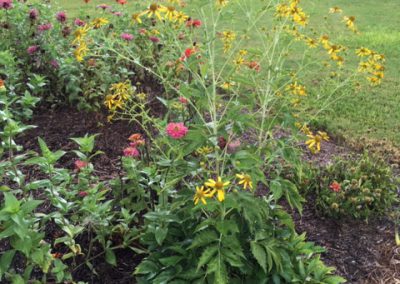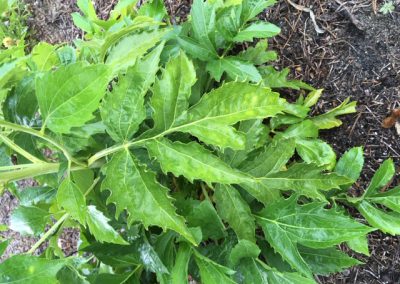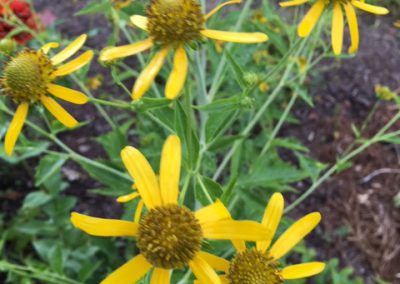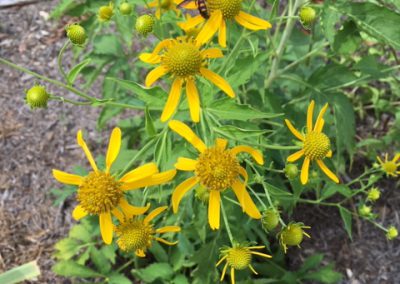Until plans were underway for our UF/IFAS Demonstration Butterfly Garden, I had never heard of Cutleaf Coneflower, Rudbeckia lacineata. Master Gardener Volunteer Jody Wood-Putnam included this gem in her garden design and introduced me and many of our visitors to a new garden favorite.
Although in the same genus as your common Black-eyed Susan’s (Rudbeckia fulgida or R. hirta) this perennial has very distinct differences. Rather than the low growing, hairy, oblong leaves of Black-eyed Susan, Cutleaf Coneflower has smooth pinnately lobed leaves with serrated edges. The leaves are still clump forming but form an almost bush-like shape. By mid to late summer, tall flower spikes emerge and are covered in bright yellow flowers bringing the overall height of the plant over 5 feet tall!
Cutleaf Coneflower is native to North America with several variations adapted to different regions including the Southeast and Florida. This perennial performs well in full sun to part shade and needs a lot of space. Mature plants can reach 3’ wide by 10’ tall and may require staking. The plant can spread through underground runners, so be sure to give it lots of space. In North Florida leaves may be evergreen if winter is mild. Cutleaf Coneflower is a good wildlife attractant providing nectar and pollen for many insects and if you leave the flowers on to mature the seed the is eaten by songbirds, including goldfinch.
To see this plant in person, stop by the UF/IFAS Demonstration Garden at 2728 E. 14th Street, Panama City, FL. If during normal business hours, check in for available seeds from our Pollinator Garden. 850-784-6105
More information about Cutleaf Coneflower see https://plants.ces.ncsu.edu/plants/rudbeckia-laciniata-var-humilis/
-

Cutleaf coneflower can grow to over 5' tall in one season. Photo: J_McConnell, UF/IFAS
-

Foliage of cutleaf coneflower. Photo: J_McConnell, UF/IFAS
-

Cutleaf Coneflower blooms from summer to fall. Photo: J_McConnell, UF/IFAS
-

Summertime blooms of cutleaf coneflower are attractive to many insect species. Photo: J_McConnell, UF/IFAS
Latest posts by Julie McConnell (see all)
- Thinking of Starting a Cut Flower Business? Don’t miss out on Cut Flower 101! - October 30, 2025
- 2025 Gardening in the Panhandle LIVE! Great Southeast Pollinator Census – Bee a Citizen Scientist! Wrap Up - September 18, 2025
- Will you Bee a Citizen Scientist? - August 15, 2025
